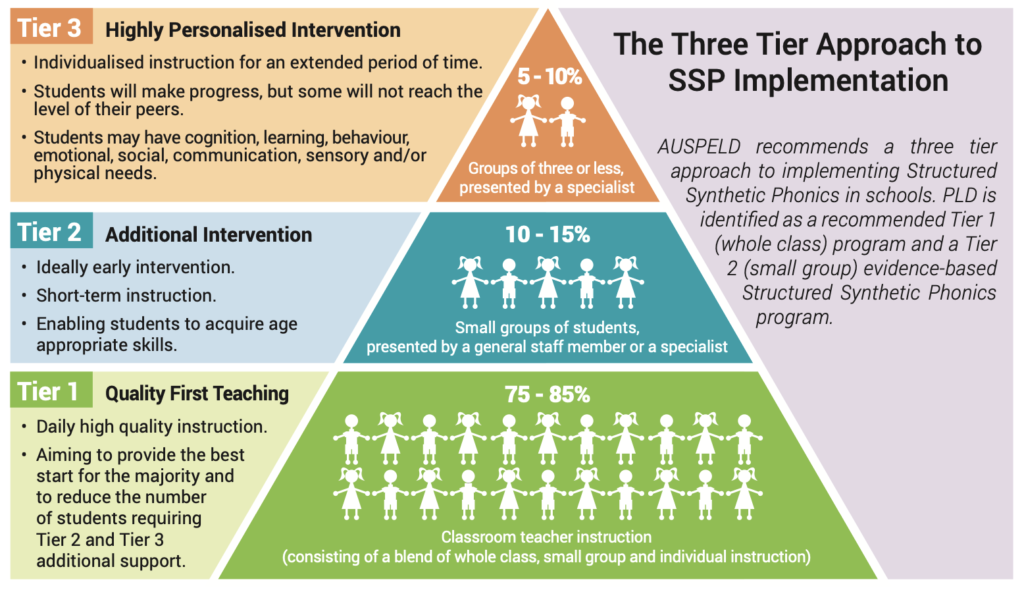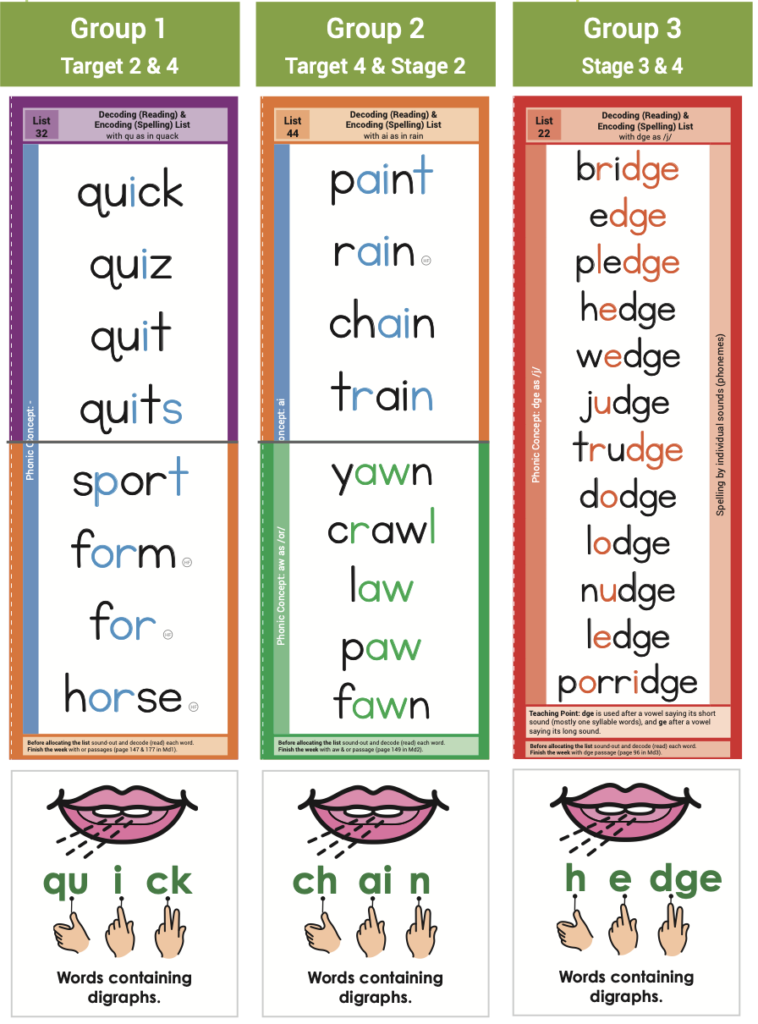What are the RTI or MTS Models?
The response to intervention (RTI) or multi-tiered system (MTS) model is an approach designed to identify and provide appropriate support to students who require more intensity or differentiated instruction to engage or progress in their learning. Core principles of RTI include multi-tiered systems of support, early intervention, data-driven decision-making, and the use of evidence-based intervention and or instruction.
The model consists of three tiers, with Tier 1 focused on quality core instruction, Tier 2 providing additional support for students behind their peers, and Tier 3 offering intensive intervention for students who are not responding to Tier 1 or 2 instruction.

What is the Evidence for RTI’s use?
Research has demonstrated that early identification of students at risk for reading difficulties and the provision of appropriate intervention can lead to improved literacy outcomes (National Reading Panel, 2000). Education departments across Australia have endorsed the RTI model to support literacy development (QLD & VIC). Significant improvements across Prep to Year 2 students have been found when a systematic synthetic phonics (SSP) program was provided at the Tier 1 level and implemented across all three tiers with intensity and instructional time altered to cater for all students (rather than different programs for Tier 2 and 3 students) (Marchand-Martella & Martella, 2007).
How does PLD Utilise the RTI Model?
PLD’s Termly screening and tracking for reading and spelling provide teachers with the tools to assess students’ responses to taught phonic concepts. The tracking sheets provide teachers with a simple and consistent way to measure student progress and identify students who are not responding to the intensity and manner of instruction being provided.

For example, Jude’s spelling results have not improved by the recommended 25% each Term. Therefore, this informs Jude’s classroom teacher that he requires more time and attention from an adult to learn the phonic concepts taught. This means that Jude’s teacher will engage with a support teacher or teacher aide to provide more opportunities for learning in small group environments, they will contact Jude’s parents and discuss ways for Jude to continue to consolidate his learning at home, and the teacher will check-in with Jude more frequently to provide quality differentiated instruction during whole class or small group learning.
PLD aims to provide teachers with the tools to ensure they can effectively teach all children. This means each class will have three targeted teaching plans catering to students at or above year level expectations, just below year level expectations and those well below year level expectations. The whole class is exposed to all three teaching plans through word study lists presented each week. This allows students to revise and consolidate phonic concepts previously taught and pre-teach students who will need more time to learn new concepts. PLD recommends students who have been identified as showing slow or minimal progress from whole class teaching (students identified as Tier 2-3) are provided with small group or individual instruction on the phonic concepts they learn in class each week.

What are the potential benefits?
Clearly planned inclusive and differentiated instruction
Providing students with three targeted teaching plans promotes inclusive education where all students are completing the same work (e.g. completing speech-to-print tasks) but are provided with concepts that match their skill level (e.g. different word study list). When students are provided with accessible learning opportunities they will improve faster because students are receiving appropriate instruction.
Appropriate and clear expectations for each student
Teachers know what skills students possess and can provide more informed instructional decisions. Often, this means the teacher has a clear understanding of what Tier 2 and 3 student’s need, resulting in less specialist referrals required.
Purposeful, consistent and appropriate progress monitoring
Skills and knowledge of concepts are systematically measured, enabling teachers to target and address specific gaps and errors in a student’s learning. This approach not only enhances the precision of instruction but also ensures that classroom teachers are actively documenting student progress, thereby increasing their accountability for each student’s academic development.
Please see the Teaching Sequence Manual and Screening and Tracking Manual for your year level for more information on how you can effectively plan and cater for the range of abilities in your class.
Reference List
Marchand-Martella, N. E., Ruby, S. F., & Martella, R. C. (2007). Intensifying Reading Instruction for Students within a Three-Tier Model: Standard-Protocol and Problem Solving Approaches within a Response-to-Intervention (RTI) System. Teaching Exceptional Children Plus, 3(5), n5.
National Reading Panel (US), National Institute of Child Health, & Human Development (US). (2000). Teaching children to read: An evidence-based assessment of the scientific research literature on reading and its implications for reading instruction: Reports of the subgroups. National Institute of Child Health and Human Development, National Institutes of Health.



 print
print